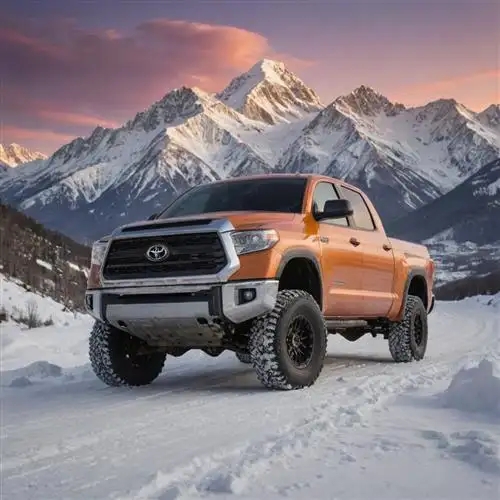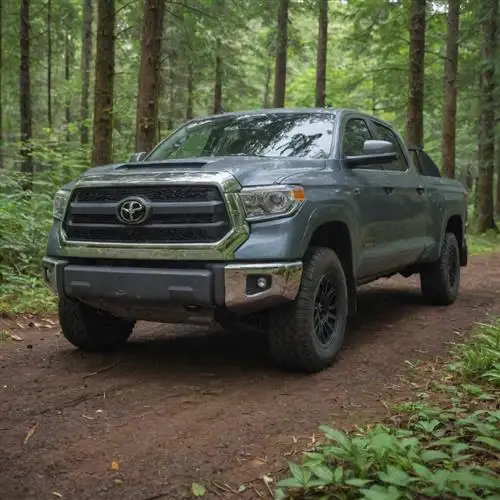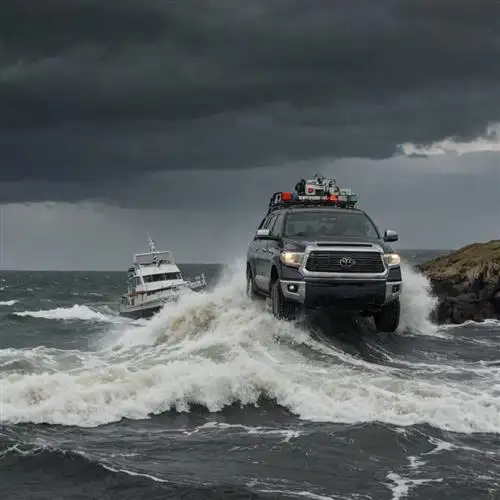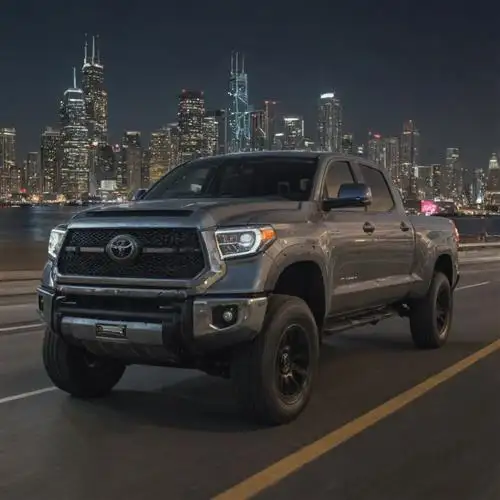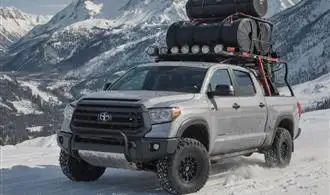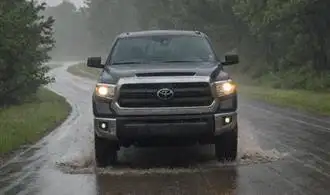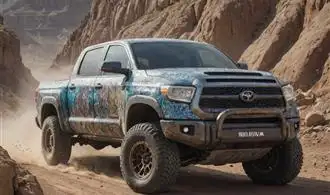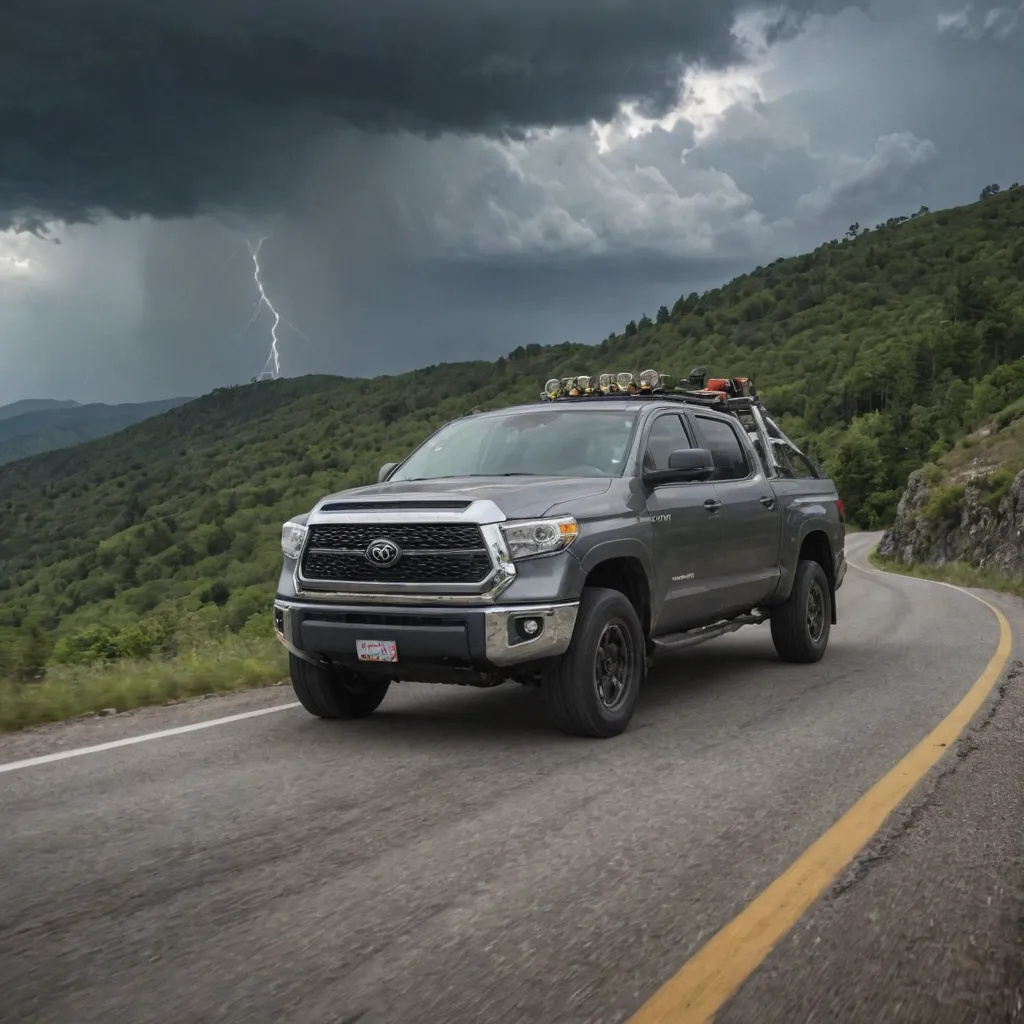
Toyota Tundra Towing Capacity
The Toyota Tundra is a formidable truck that offers exceptional towing capabilities, making it a popular choice for those who require hauling heavy loads. The Tundra's towing capacity is a crucial consideration for many buyers, and it is essential to understand the range of towing capacities available across the model lineup.
The maximum towing capacity of the Toyota Tundra varies depending on the specific configuration, engine, and drivetrain. The base model Tundra, equipped with the standard 4.6-liter V8 engine, has a towing capacity of up to 6,800 pounds. However, for those who require even greater towing power, the available 5.7-liter V8 engine can boost the Tundra's towing capacity to an impressive 10,200 pounds.
It's important to note that the towing capacity can be further influenced by various factors, such as the weight of the cargo, the type of trailer, and the road conditions. To ensure safe and efficient towing, it is recommended to consult the vehicle's owner's manual or speak with a Toyota dealer to determine the optimal towing setup for your specific needs.
When it comes to towing with the Toyota Tundra, the truck's robust construction and advanced features play a crucial role. The Tundra is equipped with a sturdy frame, heavy-duty suspension, and powerful brakes, all of which contribute to its impressive towing capabilities. Additionally, the Tundra offers advanced towing technologies, such as Trailer Sway Control and Integrated Trailer Brake Controller, to provide added stability and control when towing heavy loads.
Towing Accessories for Your Toyota Tundra
When it comes to towing in your Toyota Tundra, the right accessories can make all the difference. From hitch receivers to trailer brakes, the range of towing accessories available can be overwhelming. However, with a little research and understanding, you can ensure your Tundra is equipped to handle even the most demanding towing tasks.
One of the most important towing accessories for the Toyota Tundra is the hitch receiver. This sturdy component connects your vehicle to the trailer, allowing you to tow with confidence. Look for a hitch receiver that is rated for the weight capacity of your Tundra, ensuring it can safely handle the load. Additionally, consider a hitch with a built-in wiring harness, making it easier to connect your trailer's lights and brakes.
Another essential towing accessory is trailer brakes. Many states require trailers over a certain weight to have their own braking system, and the Toyota Tundra can be equipped with a variety of trailer brake controllers. These devices allow you to adjust the braking force applied to the trailer, ensuring a smooth and controlled stop, even when towing heavy loads.
Towing mirrors are another important accessory to consider. These larger, adjustable mirrors provide better visibility of the trailer, allowing you to maneuver with confidence and safely change lanes. Look for mirrors that can be easily installed and removed, making it convenient to use them only when towing.
Depending on the type of trailer you plan to tow, you may also need accessories such as a weight distribution hitch, a sway control system, or a brake controller. Weight distribution hitches help distribute the trailer's weight evenly across the Tundra's axles, improving handling and stability. Sway control systems prevent the trailer from swaying side to side, reducing the risk of an accident. Brake controllers allow you to adjust the braking force applied to the trailer's wheels, ensuring a smooth and controlled stop.
Towing Tips for Toyota Tundra Owners
Towing with your Toyota Tundra is a powerful capability that can unlock a world of possibilities. As a Tundra owner, you have the strength and versatility to handle a wide range of towing tasks, from hauling heavy equipment to transporting your prized recreational toys. Whether you're planning a cross-country adventure or tackling a job site, mastering the art of towing with your Tundra is key to unlocking its full potential.
One of the most crucial aspects of towing with your Tundra is understanding its towing capacity. Your Tundra's towing capacity can vary depending on the model, engine, and configuration, so it's essential to consult your owner's manual or speak with a Toyota dealer to determine the maximum weight your vehicle can safely tow. Exceeding this limit can not only put a strain on your Tundra's performance but also compromise your safety and the safety of others on the road.
When it comes to towing, proper preparation is paramount. Before hitching up your trailer or load, ensure your Tundra's tires are properly inflated and in good condition. Additionally, check that your trailer's tires, brakes, and lights are all functioning correctly. Proper weight distribution is also crucial, as an unbalanced load can make your Tundra difficult to control and lead to dangerous situations. Consider investing in a weight distribution hitch to ensure your trailer is properly balanced and secured.
Driving with a trailer or heavy load requires a different approach than regular driving. Increase your following distance, take turns more slowly, and be mindful of your Tundra's increased braking distance. Remember to use your mirrors and be aware of your surroundings, as your vehicle's size and weight can make it challenging to maneuver in tight spaces. If you're unsure of your abilities, consider taking a towing safety course or consulting with a professional to ensure you're confident and capable behind the wheel.
One often-overlooked aspect of towing with your Toyota Tundra is the importance of customizing your vehicle to suit your towing needs. Upgrading your suspension, brakes, or even adding a heavy-duty hitch can significantly improve your Tundra's towing performance and make the process safer and more efficient.
Maximizing Fuel Efficiency During Towing
Towing with your Toyota Tundra can be a powerful and versatile capability, but it can also impact your fuel efficiency. To ensure you're getting the most out of your Tundra's towing performance while maintaining optimal fuel economy, consider these strategies:
Plan Your Route Carefully: Before setting out, research your route and identify the most efficient roads and highways. Avoid steep inclines, heavy traffic, and constant starts and stops, as these can significantly decrease your fuel efficiency while towing.
Maintain Proper Tire Pressure: Ensuring your Tundra's tires are properly inflated can make a noticeable difference in fuel economy. Refer to your owner's manual or the information placard on your vehicle to find the recommended tire pressure for your specific model and load conditions.
Reduce Aerodynamic Drag: If you're towing a trailer, make sure it's properly aligned and streamlined to minimize wind resistance. Consider adding aerodynamic accessories like trailer skirts or rear spoilers, which can help improve fuel efficiency.
Use Tow/Haul Mode: Many modern trucks, including the Toyota Tundra, feature a tow/haul mode that adjusts the transmission and engine to optimize performance and efficiency while towing. Engage this mode whenever you're hauling a load to take advantage of its fuel-saving benefits.
Reduce Vehicle Weight: Before towing, ensure you're not carrying any unnecessary items in your Tundra or the trailer. The less weight you're hauling, the less fuel your truck will consume.
Maintain Your Vehicle: Regular maintenance, as outlined in your Tundra Maintenance Guide - How to Avoid Costly Repairs, can help ensure your truck is running at peak efficiency. This includes oil changes, air filter replacements, and other preventative measures that can improve fuel economy.
Safety Considerations for Towing with Your Toyota Tundra
Towing a heavy load with your Toyota Tundra requires careful planning and consideration for your safety and the safety of other drivers on the road. One of the primary factors to consider is the towing capacity of your Tundra. It's essential to understand the maximum weight your vehicle can safely tow, which can vary depending on the model, engine, and other factors. Exceeding the towing capacity can not only put strain on your Tundra's components but also compromise its handling and stability, potentially leading to dangerous situations.
Another crucial aspect of safe towing is properly securing the load. Ensure that the trailer or equipment you're towing is firmly attached to your Tundra's hitch and that all the necessary safety chains, lights, and brakes are functioning correctly. Regularly check these connections to prevent any unexpected separations during your journey.
Driving dynamics also play a significant role in towing safety. Towing a heavy load can significantly impact your Tundra's acceleration, braking, and overall handling. Adjust your driving style accordingly, maintaining a lower speed, allowing for longer braking distances, and being extra cautious when navigating turns and merging into traffic. Consider upgrading your Tundra's brakes or suspension system if you frequently tow heavy loads to improve its performance and stability.
Balancing the load and properly distributing the weight is another essential consideration. Avoid placing too much weight on the front or rear of the trailer, as this can lead to poor handling and, in extreme cases, the risk of the trailer fishtailing or jackknifing. Consult your Tundra's owner's manual or a professional for guidance on proper weight distribution techniques.
Visibility is also a concern when towing. Ensure your Tundra's side mirrors are adjusted to provide a clear view of the trailer, and consider installing additional mirrors or a backup camera system to enhance your awareness of your surroundings. Be extra vigilant when changing lanes, merging, or maneuvering in tight spaces to avoid collisions.
Lastly, it's essential to familiarize yourself with the local laws and regulations regarding towing. Some areas may have specific requirements for trailer lighting, brakes, or other safety equipment. Staying informed and compliant with these guidelines can help you avoid fines or potentially dangerous situations.

